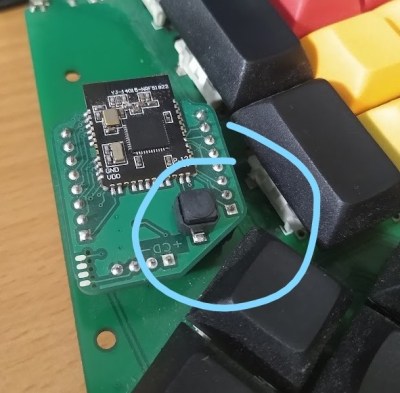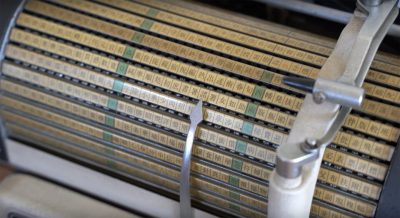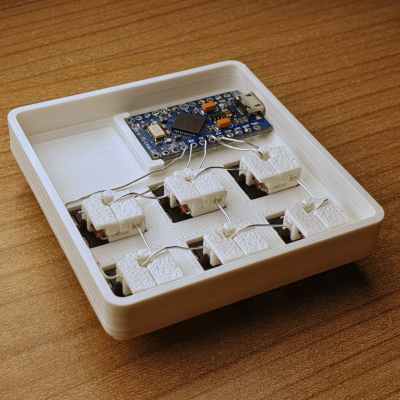Keebin’ with Kristina: the One With the Tri-lingual Typewriter

Isn’t it just fantastic when a project finally does what you wanted it to do in the first place? [Simon Merrett] isn’t willing to compromise when it comes to the Aerodox. His original vision for the keyboard was a wireless, ergonomic split that could easily switch between a couple of PCs. Whereas some people are more into making layout after layout, [Simon] keeps pushing forward with this same design, which is sort of a mashup between the ErgoDox and the Redox, which is itself a wireless version of the ErgoDox.
 The Aerodox has three nRF51822 modules — one for the halves to communicate, one for the control half to send key presses, and a third on the receiver side. [Simon] was using two AA cells to power each one, and was having trouble with the range back to the PC.
The Aerodox has three nRF51822 modules — one for the halves to communicate, one for the control half to send key presses, and a third on the receiver side. [Simon] was using two AA cells to power each one, and was having trouble with the range back to the PC.
The NRFs want 3.3 V, but will allegedly settle for 2 V when times are hard. [Simon] added a boost converter to give each a solid 3.3 V, and the Aerodox became reliable enough to be [Simon]’s daily driver. But let’s go back to the as-yet-unrealized potential part.
The point was to use this keeb on multiple PCs with ease. [Simon] recently found someone’s Bluetooth code for the Mitosis keyboard and adapted it to work on the Aerodox. He’s using a Gazell link between the halves, and Bluetooth from the control half back to the PCs. Unfortunately, [Simon] had to revamp the timer interrupts and debouncing scheme that came with emulating the Redox, but it works now and it switches between PCs with the press of a button. Now that [Simon] is nice and comfortable with nRF silicon, we might see an nRF52 version running ZMK next. Time will tell.
Historical Clackers: Tri-lingual Toshiba Typewriter

No, that isn’t an ornate roll-top desk — it’s a tri-lingual typewriter made by Toshiba from 1940-1954 with over 1,000 characters. This bad boy can type in Japanese, Chinese, and English by spinning the cylinder, using the pointer to select the character, and working the lever down below.
This is the second index typewriter that Toshiba produced. The first was called the Nippon, and came out in 1915. The Nippon worked by selecting an individual character from a tray. In the mid-1950s, Toshiba switched to a Western-style keyboard.
On this one, the BW-2112, the kanji are arranged phonetically down the long edge of the barrel, and the Arabic letters and numbers are in alphabetical and numerical order. As you might guess, it’s a pretty slow process, even if know what you’re doing. But you don’t have to guess what that looks like — just check it out in the video below. Too bad we don’t get to see the inside.
Thanks to [ukezi] for the tip on this one!
ICMYI: Look Ma, No Solder
 Do all these crazy inputs make you want to jump in the keeb game? That’s totally understandable. So why not start small?
Do all these crazy inputs make you want to jump in the keeb game? That’s totally understandable. So why not start small?
With 3D printers around, it really couldn’t be any easier to build a custom macropad, especially when you have the shoulders of hackers like [Jan Lunge] to stand on. And with [Jan]’s build, you don’t even need any solder.
The key to connectivity here is in the small plastic clip [Jan] designed that snaps in after you’ve run the column wire. Not only does this plastic bit keep both wires held in place, it keeps them separated, too — this is especially good if you plan to use bare wire like [Jan] did.
With a design like this one, it would be easy to dress it up with color, or make it minimal and monotone. Either way, it’s sure to look nice on your desk.
Got a hot tip that has like, anything to do with keyboards? Help me out by sending in a link or two. Don’t want all the Hackaday scribes to see it? Feel free to email me directly.
Post a Comment